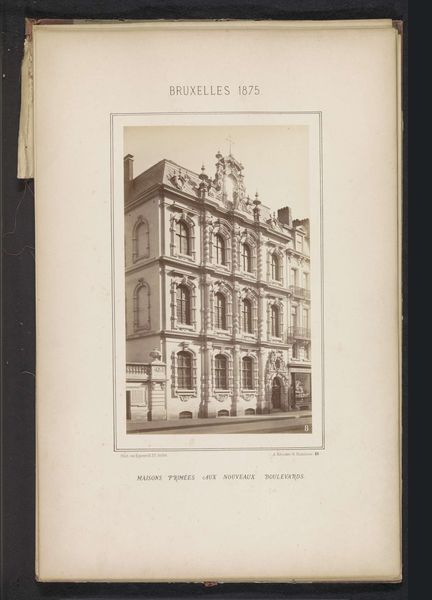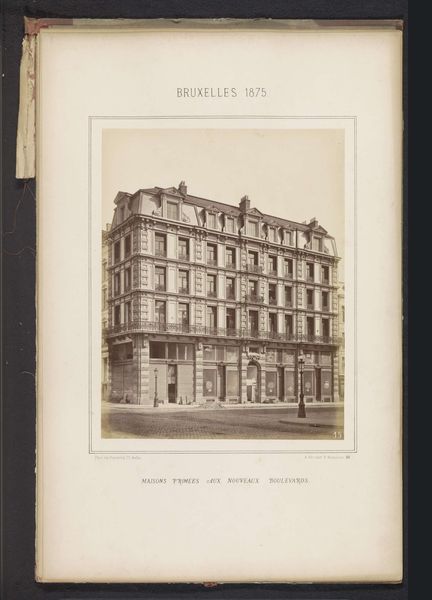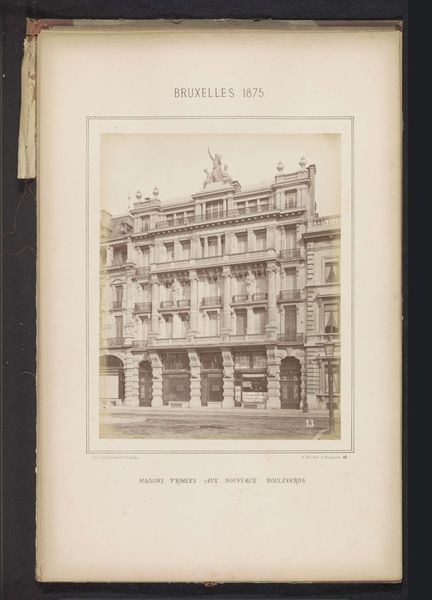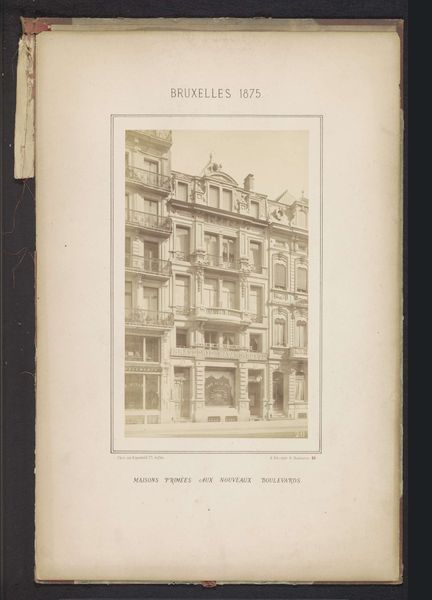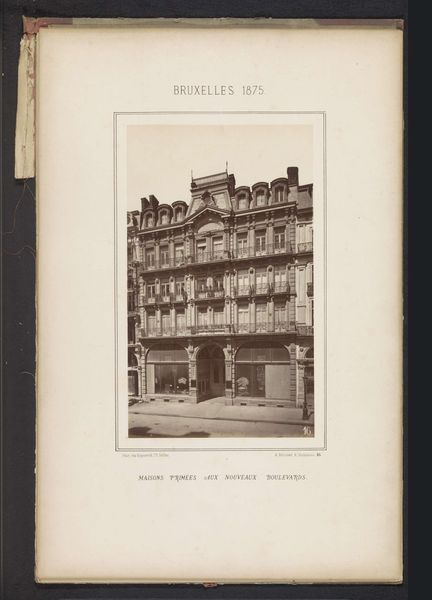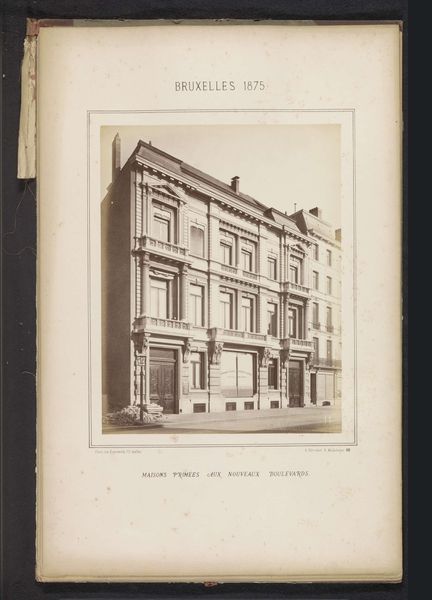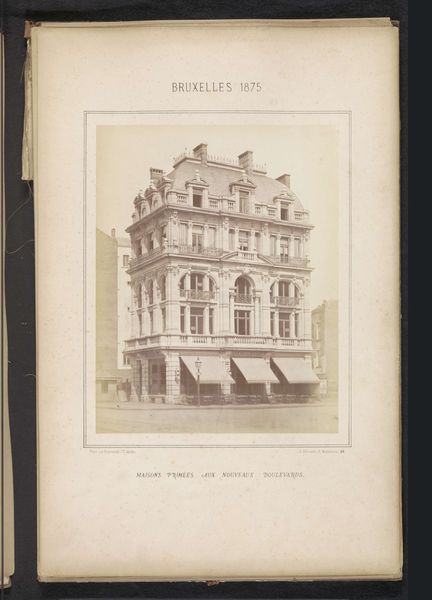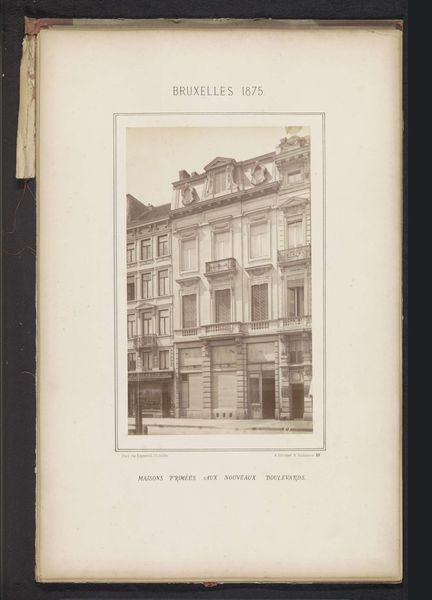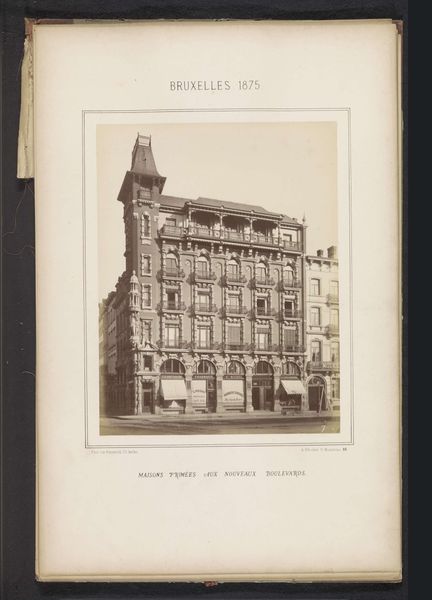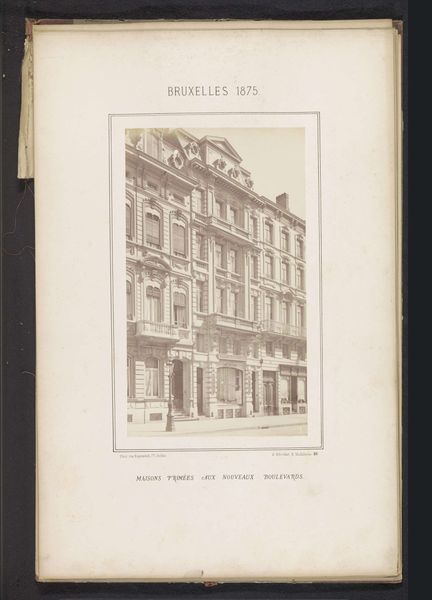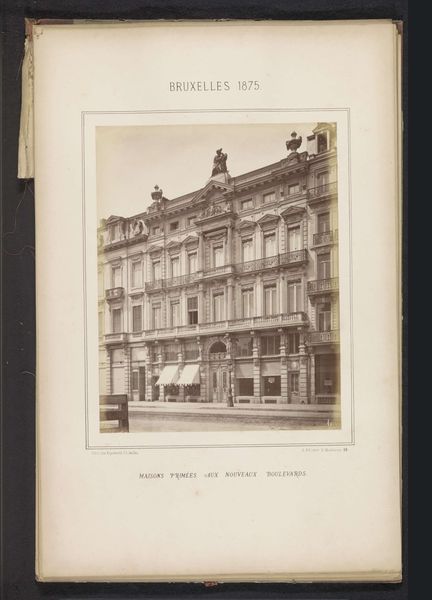
print, photography, site-specific
# print
#
photography
#
coloured pencil
#
site-specific
#
cityscape
#
watercolor
#
realism
Dimensions: height 271 mm, width 208 mm
Copyright: Rijks Museum: Open Domain
Curator: This is an 1875 print of the model school on Boulevard du Hainaut in Brussels, by Alexandre de Blochouse. It’s part of a series documenting new constructions along the city boulevards. Editor: There's a severe formality to it. The rigid symmetry and the gray tonality create a sense of solemnity. Curator: The image provides insight into the urban planning initiatives of the era. Consider how new boulevards like this one, acted as arteries for the city's industrial development, impacting land use and social mobility. Editor: Observe how the arched windows create a pattern of repetition on the first and second floors, providing rhythm and harmony within its vertical orientation. Curator: Beyond architectural details, what is noteworthy about this photograph, is how this style building, and this type of civic construction in general, shaped communal practices during a pivotal time of European industrialization. Public space and the rise of cities were all being codified here. Editor: You have a good point; the lines are so defined that it makes it seem timeless, but there is nothing organic or unpredictable about it; in a word: orderly. Curator: It's important to recognize that mass-produced images such as these served practical goals, demonstrating to wealthy patrons, that is, investors, what types of property were on the rise in newly established, high-demand areas of the city. Editor: Speaking to the texture, one might interpret the gradations in light and shadow as having to do with more than just stone and shade. There’s something that invites a somber meditation. Curator: I agree completely. With Blochouse’s keen eye and thoughtful use of the photographic process, he preserved an instance in time; in addition to capturing a specific moment, he preserved urban progress, and he archived evolving socioeconomic relations. Editor: Well, my formal assessment reveals not only architectural style and period norms but also an intriguing interaction between aesthetic order and evocative undertones that speak to broader notions beyond its face.
Comments
No comments
Be the first to comment and join the conversation on the ultimate creative platform.
